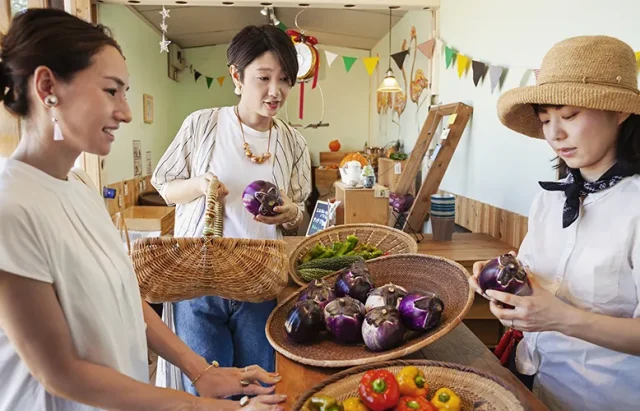
A new breed of traveler has emerged: the culinary excavator. Ditching the latest fads, these gastronomic archaeologists are in favour of unearthing authentic, traditional dishes that tell the story of a destination’s cultural heritage. There’s almost nowhere better to experience this trend than Japan, a country where culinary craftsmanship has been elevated to an art form.
The Culinary Excavator: A New Species of Foodie
Research by Booking.com reveals a seismic shift in travel priorities, with 61% of globetrotters more interested in learning about the origins of local delicacies than ever before. This surge in culinary curiosity isn’t just about satisfying taste buds; it’s about embarking on a sensory journey through time and place.
Gary Clark, Academy Director at SIA, a business operating ski instructor courses across four resorts in Japan says: “Japan is the perfect playground for culinary excavators.
“Each dish here is a portal to the past, offering insights into the country’s geography, history, and cultural values.”
Japan: A Gastronomic Treasure Trove
Japan tops the charts for food tourism, with a staggering 56% of travelers citing it as their top culinary destination in 2023, up from 54% in 2022.
According to a report by Statista, eating Japanese food was the top motivation for visiting the country in 2023, with 83% of foreign tourists planning a holiday to Japan for the gastronomic experience.
The country’s commitment to preserving traditional cooking methods and ingredients makes it a mecca for those seeking authentic food experiences.
“What sets Japan apart is the dedication to culinary craftsmanship,” Gary Clark explains.
“From the precise knife skills of sushi chefs to the centuries-old fermentation techniques used in miso production, every dish tells a story of dedication and expertise.”
Four Foodie Wonders of Japan and Where to Find Them
1. Kaiseki Ryori in Kyoto: The Art of Seasonal Dining
The Dish: Kaiseki ryori is not just a meal; it’s a multi-course journey through the seasons, showcasing the finest local and seasonal ingredients.
Where to Experience It: Kyoto, the former imperial capital, is the spiritual home of kaiseki.
Why Visit: Beyond the culinary delights, Kyoto offers a glimpse into Japan’s rich cultural heritage with its numerous temples, shrines, and traditional gardens.
2. Fugu in Shimonoseki: Daring Dining with Blowfish
The Dish: Fugu, or pufferfish, is infamous for its lethal potential if not prepared correctly. It’s a delicacy that requires years of training to master.
Where to Experience It: Shimonoseki, in Yamaguchi Prefecture, is known as “Fugu Capital” and supplies over 80% of Japan’s fugu.
Why Visit: After your thrilling fugu experience, explore the dramatic Akiyoshidai plateau or take a day trip to the historic port city of Mojiko.
3. Wanko Soba in Morioka: A Test of Endurance
The Dish: Wanko soba is a unique eating challenge where diners are served small bowls of soba noodles in rapid succession until they can eat no more.
Where to Experience It: Morioka, the capital city of Iwate Prefecture, is the birthplace of this quirky tradition.
Why Visit: Morioka is surrounded by three mountains, offering excellent hiking opportunities.
4. Kobe Beef in Kobe: The Ultimate Marbled Meat
The Dish: Kobe beef, from the Tajima strain of Japanese Black cattle, is renowned worldwide for its flavor, tenderness, and fatty, well-marbled texture.
Where to Experience It: While available throughout Japan, nothing beats tasting it in its hometown of Kobe.
Why Visit: After indulging in the world’s most famous beef, take a cable car up Mount Rokko for panoramic views of Kobe and Osaka Bay, or relax in the Arima Onsen hot springs.
The Future of Culinary Exploration
As we look ahead, the culinary excavator trend shows no signs of slowing down. Booking.com’s research indicates that 81% of travelers want to try Indigenous cuisines in 2024, signaling a growing appetite for authentic, culturally significant food experiences.
Gary Clark notes: “What’s exciting is how this trend is evolving. We’re seeing a blend of traditional experiences with modern technology.
“Some restaurants in Japan are now offering ‘phygital’ food experiences, using virtual and augmented reality to enhance the dining experience.
“It’s a fascinating way to bridge the gap between past and present.”
Conclusion
The rise of the culinary excavator represents more than just a food trend; it’s a movement towards more meaningful, culturally immersive travel experiences. By seeking out traditional dishes in their place of origin, travelers are not only treating their taste buds but also supporting local communities and preserving culinary heritage.
As we continue to explore the world through its flavors, Japan stands out as a destination for food lovers and cultural enthusiasts alike. So, pack your bags, bring your appetite, and prepare to unearth the gastronomic treasures that await in the Land of the Rising Sun.





